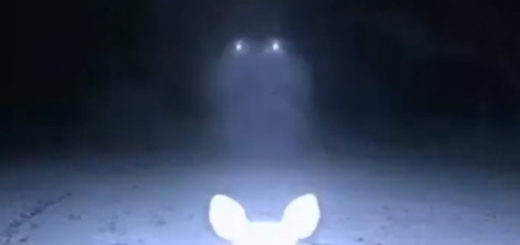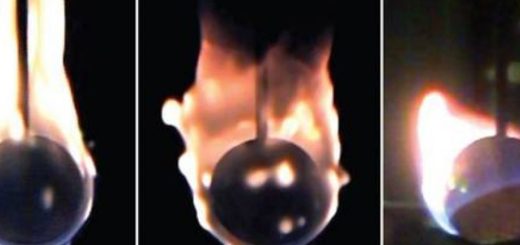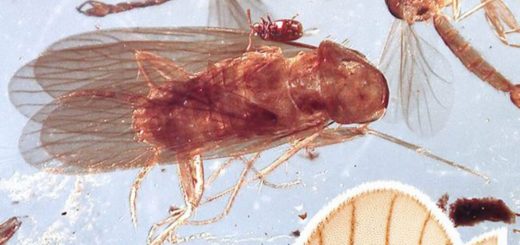Strange dwarf planet Ceres may have formed at the icy edges of the solar system
The dwarf planet Ceres is located in the asteroid belt but looks nothing like its neighbors. In a new paper, scientists propose an explanation for the conundrum.

Ceres, the most dominant member of the asteroid belt, doesn’t look like the other asteroids. Most notably, it has a lot of ammonia on its surface, which other asteroids tend to lack. The only place to get a lot of ammonia is in the outer regions of the solar system in the early days of its formation.
In a new paper, researchers propose a possible explanation for why Ceres is so different from its neighbors: Perhaps the dwarf planet began in an orbit beyond Saturn and, during a massive reshuffling of the outer planets, got planted into the asteroid belt, where it has remained to this day.
A Ceres matter
With a radius of 296 miles (476 kilometers), Ceres is by far the largest object in the main asteroid belt, the loose collection of rocks between the orbits of Mars and Jupiter. The vast majority of asteroids are far smaller than Ceres; in fact, by itself, Ceres accounts for over one-third of the entire mass of the belt.
And Ceres is weird.
NASA’s Dawn spacecraft spent several years in orbit around Ceres, mapping and studying its surface. That mission found that the surface is a mixture of water ice minerals bound with water, like clay and carbonates. Beneath that is a mantle rich in water ice surrounding a core of mainly solid rock.
Ceres has a relatively low density (2.2 grams per cubic centimeter) and a rather low albedo, meaning it’s not very reflective. This makes Ceres very similar to the most common kind of asteroid, the C-type — or carbonaceous chondrite — asteroids. Indeed, Ceres’ location within the main asteroid belt puts it close to other C-type asteroids.
But most C-type asteroids don’t have that much water and don’t have so many clays. And Ceres also has a lot of ammonia on its surface, which almost all other asteroids lack. Ammonia isn’t common in the inner solar system, where the intense heat of the sun evaporated it in the early days of the system’s formation. Instead, ammonia survived only beyond the “ice line,” the distance from the sun where volatile elements like ammonia could survive.
Indeed, Ceres doesn’t really look, smell or act like an asteroid. Instead, the dwarf planet has more in common with the most distant objects in the solar system — the members of the Kuiper Belt, like Pluto, Charon and Eris.
Scientists have proposed explanations for each strange trait. Maybe Ceres formed inside the asteroid belt, in a really weird way that allowed it to maintain a lot of water. Maybe it formed without disrupting the rest of the main belt. Maybe over the course of billions of years, a lot of ammonia floated in from the outer solar system and found itself on the surface of the dwarf planet (and not the other asteroids).
Or maybe, the authors of the new paper propose, Ceres was born beyond the orbit of the giant planets and got sent into the asteroid belt long ago.
A song of ice and also ice
The early solar system was a chaotic place. Thousands of small celestial bodies called planetesimals jostled and fought for dominance, aggregating into planets only to be smashed apart again. Among these multitudes was a vast population sitting outside the giant planets, according to the new paper, posted to the preprint database arXiv.
The most common model of the early solar system, called the Nice model (named for the city in France where a conference on solar system formation took place), states that the giant planets of the solar system formed closer to the sun, and closer to one another, than their present-day locations. Some versions of the Nice model also
When those planets began to migrate to their modern positions, it shook things up a lot. The large population of Kuiper Belt objects were disrupted, their orbits perturbed by the motions of the giant worlds. Some of them were ejected completely from the solar system. Some crashed into each other and were obliterated. Some were captured, as in the case of Neptune’s moon Triton.
And perhaps others made their way into the inner solar system.



 Creators of mankind
Creators of mankind Description of “Tall white aliens”
Description of “Tall white aliens” Where they came from?
Where they came from? About hostile civilizations
About hostile civilizations The war for the Earth
The war for the Earth “Tall white aliens” about eternal life
“Tall white aliens” about eternal life Video: “Nordic aliens”
Video: “Nordic aliens” Aliens
Aliens Alien encounters
Alien encounters The aliens base
The aliens base UFO
UFO Technology UFO
Technology UFO Underground civilization
Underground civilization Ancient alien artifacts
Ancient alien artifacts Military and UFO
Military and UFO Mysteries and hypotheses
Mysteries and hypotheses Scientific facts
Scientific facts


















